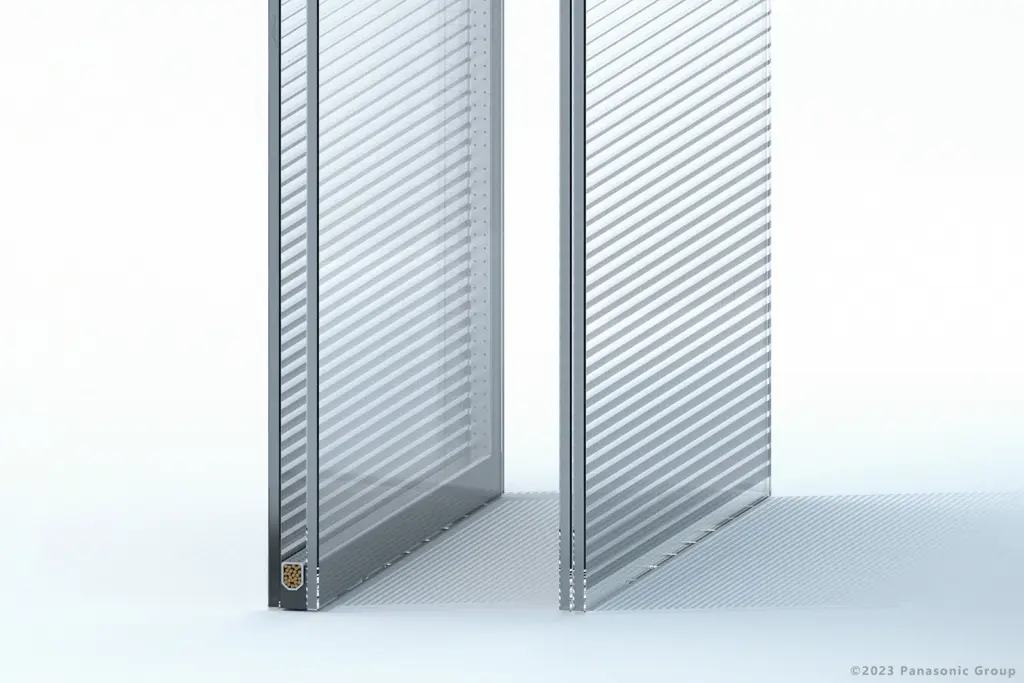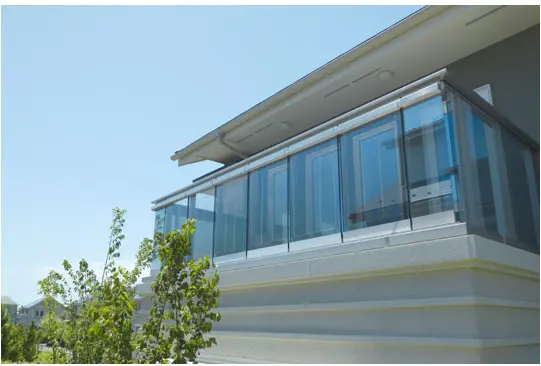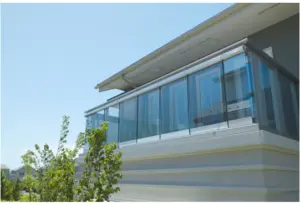As cities and urban infrastructures grow smarter, there is increasing interest in integrating multiple functionalities into singular structures or units. Imagine a window or a glass wall that not only generates power but can also display information or shut out light, like a digital curtain.

Perovskite, as a material, is known for its transparency and high efficiency in energy conversion. We have covered numerous Perovskite research papers on its use in displays. Now, intriguingly, Panasonic is showing progress in Perovskite photovoltaics that suggest intriguing opportunities for multi-purpose windows.
The main challenges for transparent displays are the cost of production, their ruggedness, and their ability to be effective when they are letting light through. Panasonic’s glass suggests that there are ways in which we can mass produce this type of glass, by implication transparent display glass, and that it would be rugged. As for the amount of light that gets through the transparent display, that remains debatable. It’s never going to be perfectly clear, but perfect is the enemy of good enough, as they say.
Panasonic Pioneers Building Integrated Perovskite Photovoltaics
The thought of displays as building materials or a part of the architecture of urban design is not new. But when Panasonic recently unveiled its prototype of a Perovskite photovoltaics glass, it triggered the thought that energy generation may have to go hand-in-hand with display generation. Panasonic terms these Perovskite photovoltaics as energy-generating glass. The technical tests of the windows will be conducted at a newly constructed model house, Future Co-Creation Finecourt III, located in the Fujisawa sustainable smart town (Fujisawa SST), Kanagawa Prefecture, Japan. The aim of the tests is twofold: to generate renewable energy and to seamlessly blend with the urban landscape while simultaneously contributing to CO₂ reduction.

As interest in renewable energy surges with a focus on achieving carbon neutrality and decarbonization, the challenges of space constraints in urban regions become more evident. The traditional rooftop isn’t the only viable space for solar installations. The notion of integrating solar cells onto windows and walls has emerged as another option but with its own set of issues. Conventional silicon-based solar cells, when applied on glass surfaces such as windows, often grapple with design and transparency concerns.
The glass-integrated Perovskite solar cells from Panasonic promise on-site power generation, even in dense urban areas. Panasonic will be holding tests of its photovoltaic glass until November 29th, 2024. Currently, the windows are on the balcony of the model house in Fujisawa SST that faces south-southeast. The balcony setup measures roughly 13 feet wide by 3 feet in height. Among the primary objectives of this demonstration are the validation of the Perovskite solar cells’ gradational, transparent design, and long-term durability.
The objective is to develop glass-integrated Perovskite solar cells that can be directly formed as the photovoltaic layer on the glass substrate. This should pave the way for the creation of energy-generating glass building materials suitable for diverse architectural structures. Panasonic is touting its proprietary inkjet coating technique and laser processing technology as the reasons why the company is bullish on the opportunity for its windows. Each Perovskite module of over 124 square inches in size registers an impressive 17.9% conversion efficiency. This efficiency rate rivals that of traditional silicon photovoltaics.
If Panasonic can deliver rugged, commercial energy-producing glass, it does make it feasible to consider a flip-side that includes transparent display technology. It may seem like two distinct disciplines but, for materials like Perovskite that serve both as energy creators and light producers, may mean a convergence of applications and a multipurpose window that changes our view of the world and displays.
Panasonic has yet to consider how it will market and sell its energy-producing glass, either through construction companies or to license it to buildings materials suppliers. Wouldn’t it be something if there was a day when displays were sold like drywall or windows?

